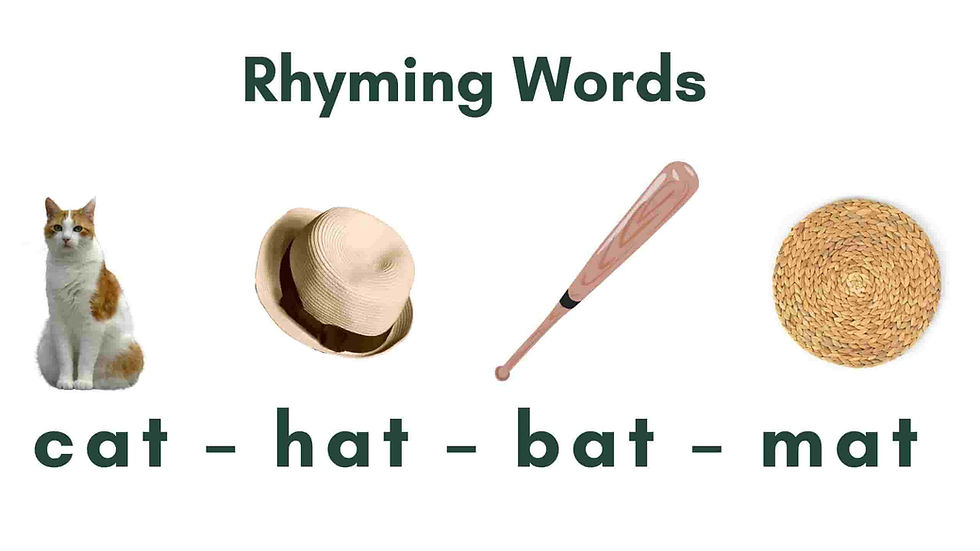Wooden Alphabet Blocks: Kindergarten Curriculum
- Aria Dana

- Aug 14
- 6 min read
Updated: Sep 1
Why Wooden Alphabet Blocks Are a Must-Have for Kindergarten Language & Arts Skills?
Learning letters and sounds is one of the most important milestones in kindergarten. One of the most effective tools to help children build this foundation?
Wooden alphabet blocks. More than just a toy, they combine play with learning, making early literacy both fun and impactful.
Hands-On Learning That Sticks
Wooden alphabet blocks allow children to see, touch, and manipulate letters. This multisensory approach helps kids connect letter shapes with sounds, which is the cornerstone of phonics and reading. When children handle blocks to form letters or words, they strengthen hand-eye coordination, fine motor skills, and spatial awareness—all critical for writing readiness.
Research demonstrates that fine motor-enriched training significantly improves children's letter recognition more than non-motor activities. The tactile experience provided by manipulating physical blocks enhances memory retention compared to passive methods. Additionally, studies show that educational toys incorporating hands-on interaction are effective in promoting early childhood development and language learning.
Boost Reading, Writing, and Creativity
These blocks encourage active learning. Kids can:
Build words using blocks to reinforce phonics
Stack and sort letters, developing spatial reasoning and problem-solving skills
Use blocks in storytelling, creating playful scenarios that enhance language and imagination
The tactile experience of blocks makes letter recognition and early reading more memorable than passive methods like worksheets alone. Research confirms that multisensory experiences significantly impact word recognition and learning, with children learning more effectively when multiple senses are engaged.
Fun, Practical Activities at Home or School

Letter Sorting: Group blocks by vowels, consonants, or uppercase/lowercase letters.
Word Creation: Build simple three-letter words for phonics practice.
Alphabet Towers: Stack letters while naming them to combine play with learning.
Story Prompts: Spell key words from stories to encourage reading and storytelling.
Educational research emphasizes the importance of varied instructional materials and manipulative resources in teaching literacy skills to young learners. Studies show significant positive relationships between the use of manipulative instructional resources and the teaching of literacy skills.
Products you may try:
Melissa & Doug Deluxe Wooden ABC/123 1-Inch Blocks Set (50 pcs) 🔗
50 colorful wooden blocks featuring letters, numbers, and pictures. Ideal for stacking, sorting, word recognition, and hands-on learning.
Joqutoys ABC Wooden Building Blocks for Toddlers (26 pcs) 🔗
26 colorful wooden blocks featuring letters, numbers, shapes, and animals. Lightweight and safe for toddlers, ideal for stacking, building, and learning the alphabet.
Uncle Goose Uppercase Alphablank Blocks 🔗
14 handcrafted basswood cubes made from sustainable Michigan wood. Each block features uppercase letters for early literacy, spelling, and stacking activities. Ideal for children ages 2 and up.
Melissa & Doug Deluxe 10-Piece Alphabet Nesting and Stacking Blocks 🔗
Set of 10 cardboard blocks with letters and pictures that nest for compact storage. Sturdy and FSC-certified, perfect for toddlers and preschoolers, ages 2–4.
QUOKKA Montessori Wooden Alphabet Blocks for Toddlers (35 pcs) 🔗
35 wooden alphabet blocks with letters, animals, and words on a peg puzzle board.
Melissa & Doug PAW Patrol Wooden ABC Block Truck (33 pcs) 🔗
Jumbo wooden truck with 28 alphabet and number blocks featuring PAW Patrol characters. Includes 3 wooden figures for pretend play.
SainSmart Jr. Wooden ABC Blocks 40PCS 🔗
Set of 40 solid wood blocks with letters, numbers, and math symbols. Rounded, smooth edges make them easy for small hands to stack, sort, and build.
Magnetic Blocks ABC 123 Alphabet Colorful Printed 🔗
Magnetic building blocks with letters, numbers, animals, fruits, and math symbols. Encourages creativity, 3D shape building, and early learning for ages 1–6.
Why Parents and Teachers Recommend Them
Wooden alphabet blocks:
Engage multiple senses for better memory retention
Make learning interactive and playful
Support both literacy and creative thinking
Research demonstrates that interactive learning media can enhance early literacy development by providing engaging and structured stimuli. Studies also indicate that wooden materials in educational environments can improve teaching quality and support social interaction and playful learning. The integration of hands-on, manipulative materials has proven effective across various educational contexts, with significant improvements in student engagement and learning outcomes.
They are an essential tool for any kindergarten literacy toolkit and work perfectly alongside other resources like rhyming books, phonics flashcards, and tracing workbooks.
Take Action: Make Learning Hands-On Today!
Ready to boost your child's reading and writing skills? Explore wooden alphabet blocks and watch your little learner build confidence in language and arts while having fun.
“There is no ‘best’ method in teaching; the best is the one that works for your child.”
References:
Abdi, A. S., & Cavus, N. (2019). Developing an electronic device to teach English as a foreign language: Educational toy for pre-kindergarten children. International Journal of Emerging Technologies in Learning (iJET), 14(22), 29. https://doi.org/10.3991/ijet.v14i22.11747
Aisyah, N., Ridwan, R., Huda, H., Faisol, W., & Muawanah, H. (2022). Effectiveness of flash card media to improve early childhood Hijaiyah letter recognition. Jurnal Obsesi : Jurnal Pendidikan Anak Usia Dini, 6(4), 3537-3545. https://doi.org/10.31004/obsesi.v6i4.2097
Damsgaard, L., Elleby, S. R., Gejl, A. K., Malling, A. S., Bugge, A., Lundbye-Jensen, J., Poulsen, M., Nielsen, G., & Wienecke, J. (2020). Motor-enriched encoding can improve children’s early letter recognition. Frontiers in Psychology, 11. https://doi.org/10.3389/fpsyg.2020.01207
Damsgaard, L., Elleby, S. R., Gejl, A. K., Malling, A. S., Bugge, A., Lundbye-Jensen, J., Poulsen, M., Nielsen, G., & Wienecke, J. (2020). Motor-enriched encoding can improve children’s early letter recognition. Frontiers in Psychology, 11. https://doi.org/10.3389/fpsyg.2020.01207
Eliza, D., Mulyeni, T., Yulsyofriend, Y., Mahyuddin, N., Erita, Y., & Dhanil, M. (2025). Implementation of project-based learning in improving scientific literacy in early childhood education: Systematic literature review. Journal of Baltic Science Education, 24(1), 71-91. https://doi.org/10.33225/jbse/25.24.71
Haberfehlner, H., De Vries, L., Cup, E. H., De Groot, I. J., Nijhuis-van der Sanden, M. W., & Van Hartingsveldt, M. J. (2023). Ready for handwriting? A reference data study on handwriting readiness assessments. PLOS ONE, 18(3), e0282497. https://doi.org/10.1371/journal.pone.0282497
Haningsih, W. O., Ihsan, N., Gusril, G., Bahtra, R., & Zarya, F. (2023). Object control abilities of kindergarten students: Impact of eye-hand coordination, nutritional status, gender. International Journal of Multidisciplinary Research and Analysis, 06(06). https://doi.org/10.47191/ijmra/v6-i6-22
Hatira, A., & Sarac, M. (2024). Touch to learn: A review of haptic technology's impact on skill development and enhancing learning abilities for children. Advanced Intelligent Systems, 6(6). https://doi.org/10.1002/aisy.202300731
Irmawati. (2024). The effectiveness of Spiderweb learning media in enhancing Hijaiyah letter recognition among early childhood learners. HEUTAGOGIA: Journal of Islamic Education, 4(2), 175-84. https://doi.org/10.14421/hjie.2024.42-03
Karaolis, O. (2023). Being with a puppet: Literacy through experiencing puppetry and drama with young children. Education Sciences, 13(3), 291. https://doi.org/10.3390/educsci13030291
Lino, D. M., & Parente, C. (2018). undefined. Advances in Early Childhood and K-12 Education, 147-163. https://doi.org/10.4018/978-1-5225-5167-6.ch010
Liwag, B. E., & Marquez, M. F. (2025). The impact of play-based learning on literacy skills of kindergarten learners. EPRA International Journal of Multidisciplinary Research (IJMR), 753-764. https://doi.org/10.36713/epra23303
Mutiarasari, M., & Laily, N. (2024). Boosting early reading skills with alphabet puzzle media: The effectiveness of positive reinforcement. Psikostudia : Jurnal Psikologi, 13(4), 594. https://doi.org/10.30872/psikostudia.v13i4.17602
Needham, A. W., Wiesen, S. E., Hejazi, J. N., Libertus, K., & Christopher, C. (2017). Characteristics of brief sticky Mittens training that lead to increases in object exploration. Journal of Experimental Child Psychology, 164, 209-224. https://doi.org/10.1016/j.jecp.2017.04.009
Piasta, S. B., & Wagner, R. K. (2010). Developing early literacy skills: A meta‐analysis of alphabet learning and instruction. Reading Research Quarterly, 45(1), 8-38. https://doi.org/10.1598/rrq.45.1.2
Sari, I. P., Sormin, R. K., Purba, A., Rahayu, A. P., & Khairas, E. E. (2023). Effectiveness of flash card media to improve early childhood English letter and vocabulary recognition in reading. Journal of Education and Learning Research, 1(1), 1-7. https://doi.org/10.62208/jelr.1.1.p.1-7
Sedillo, M. R. (2024). Level of Gamification instruction in language, literacy, and communication domains for kindergarten. GEO Academic Journal, 5(1). https://doi.org/10.56738/issn29603986.geo2024.5.57
Seidl, A. H., Indarjit, M., & Borovsky, A. (2023). Touch to learn: Multisensory input supports word learning and processing. Developmental Science, 27(1). https://doi.org/10.1111/desc.13419
Sofiandira, V. T., Anindia, D., & Widiasttuti, S. (2023). Development of alphabet block media for beginning reading learning in class I elementary school. JOSAR (Journal of Students Academic Research), 8(2), 436-450. https://doi.org/10.35457/josar.v8i2.3146
Tian, M., Deng, Z., Meng, Z., Li, R., Zhang, Z., Qi, W., Wang, R., Yin, T., & Ji, M. (2018). The impact of individual differences, types of model and social settings on block building performance among Chinese preschoolers. Frontiers in Psychology, 9. https://doi.org/10.3389/fpsyg.2018.00027
Wambui, W. M., Wanjiku, K. H., & Otieno, O. J. (2023). Relationship between improvised instructional resources and teaching of literacy skills among early childhood development and education learners in public institutions. International Journal of Elementary Education. https://doi.org/10.11648/j.ijeedu.20231201.14
Widiyanti, D., & Anggreni, A. (2025). Early childhood writing readiness influencing factors and the roles of teachers and parents. Jurnal Penelitian Medan Agama, 16(1), 58. https://doi.org/10.58836/jpma.v16i1.23919
Winarno, W., Aryanto, H., Anggaalih, N., Patria, A., Kristiana, N., & Saputra, W. (2024). Designing of wooden toys as a media to introduce letters and to soft motor muscles for early children. Proceedings of the 3rd International Conference on Language, Literature, Education, and Culture, ICOLLEC 2023, 25-27 October 2023, Bali, Indonesia. https://doi.org/10.4108/eai.25-10-2023.2348263
Winarno, W., Aryanto, H., Anggaalih, N., Patria, A., Kristiana, N., & Saputra, W. (2024). Designing of wooden toys as a media to introduce letters and to soft motor muscles for early children. Proceedings of the 3rd International Conference on Language, Literature, Education, and Culture, ICOLLEC 2023, 25-27 October 2023, Bali, Indonesia. https://doi.org/10.4108/eai.25-10-2023.2348263
.jpg)




























































Comments